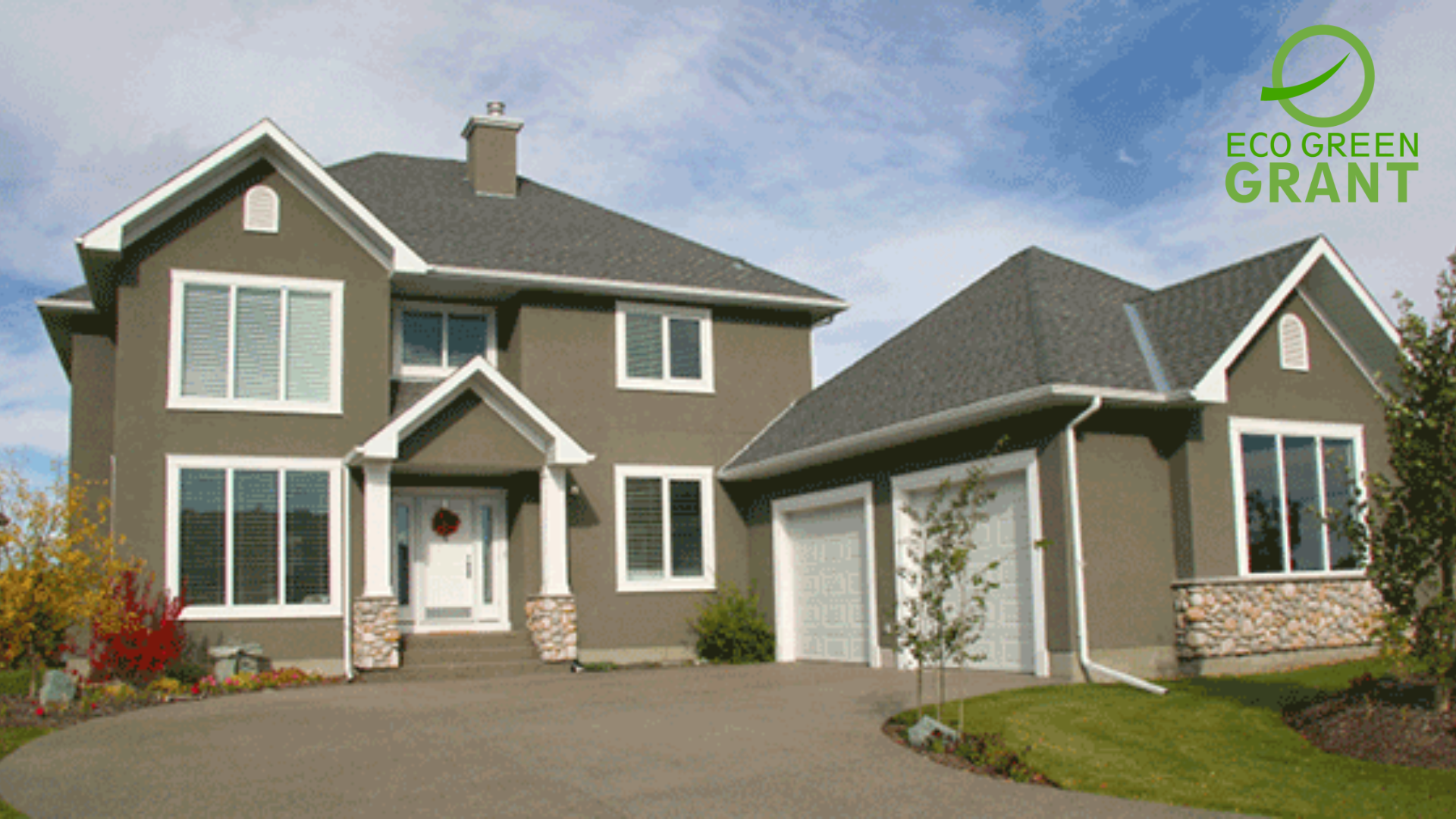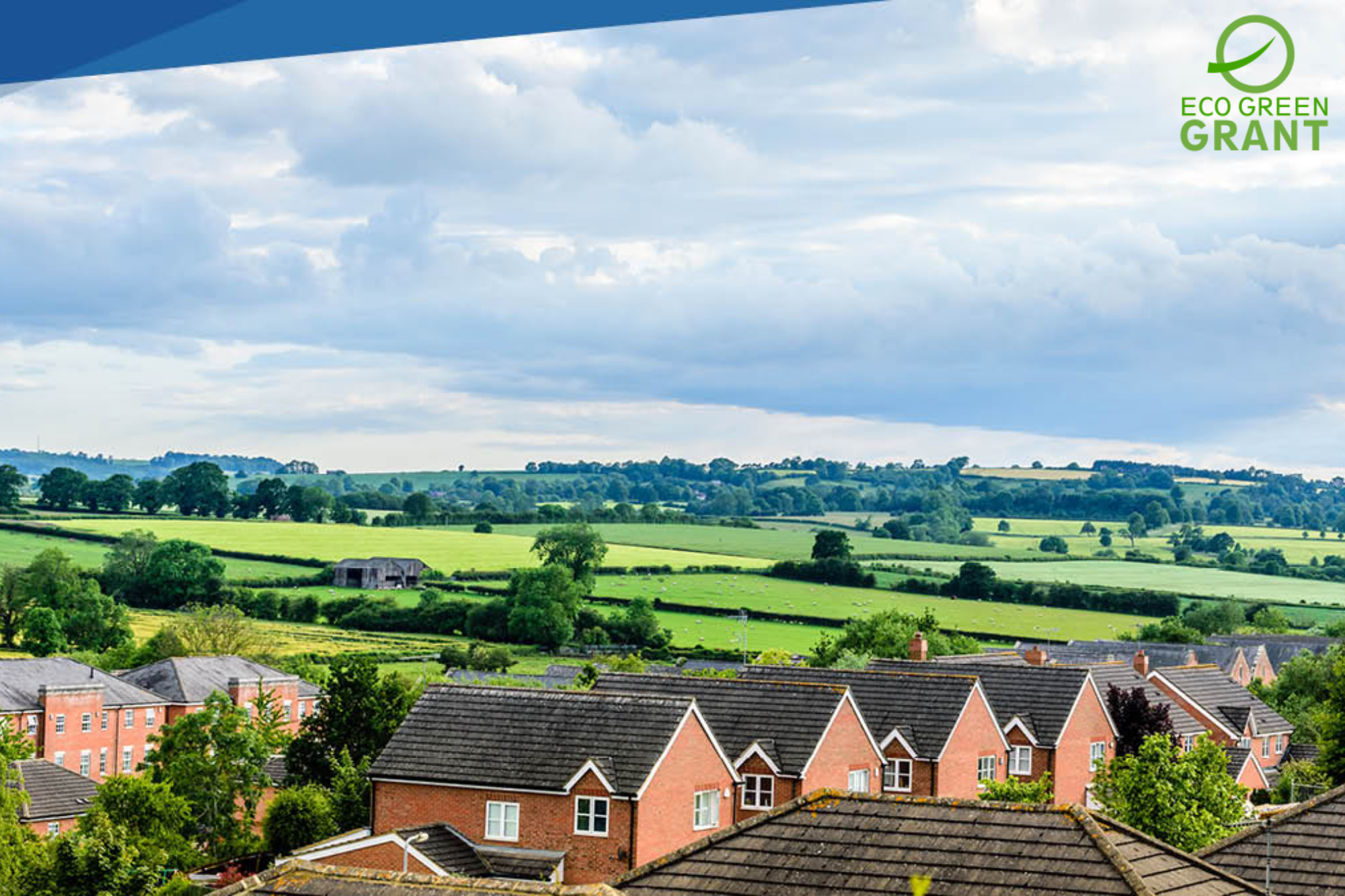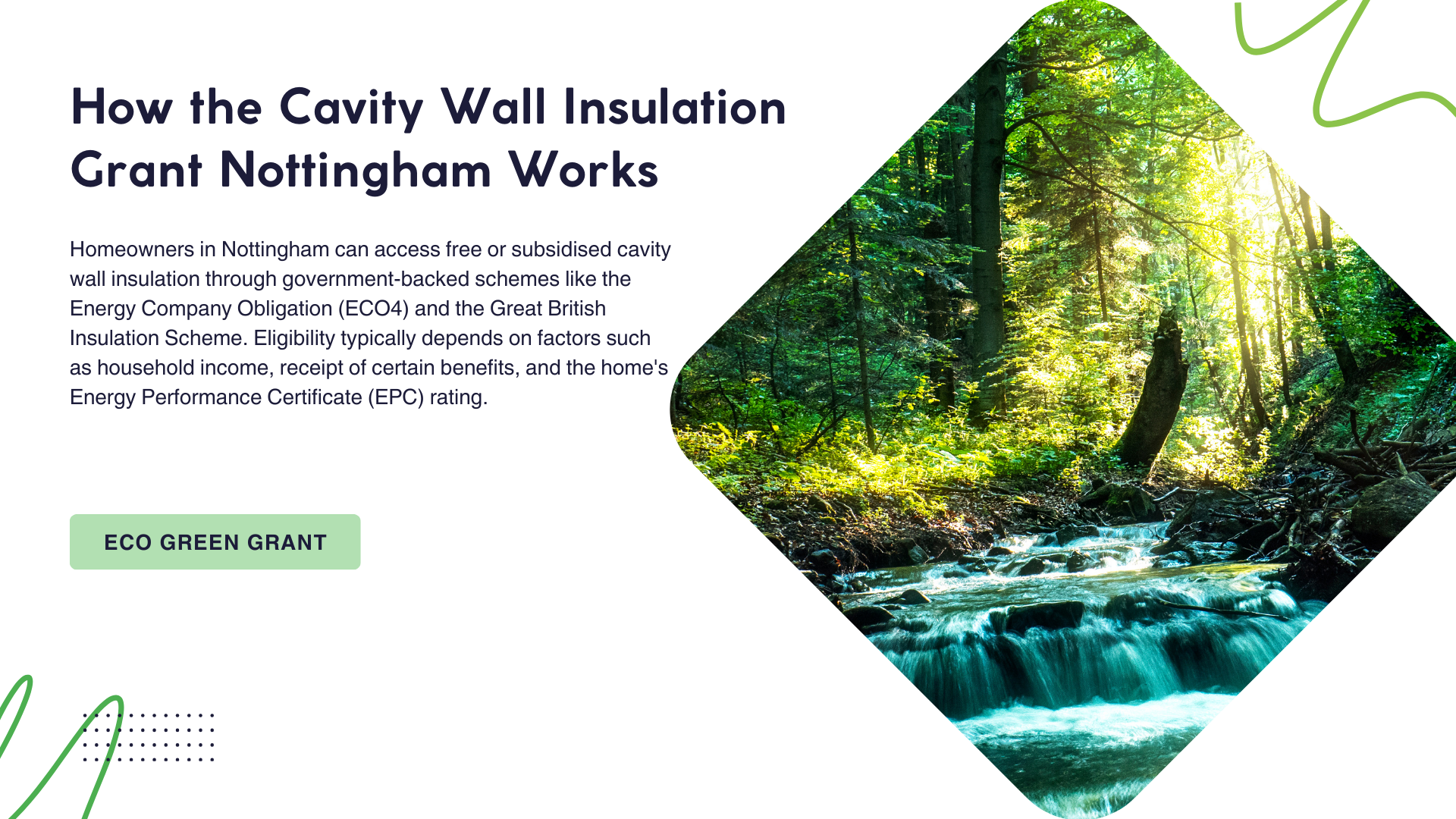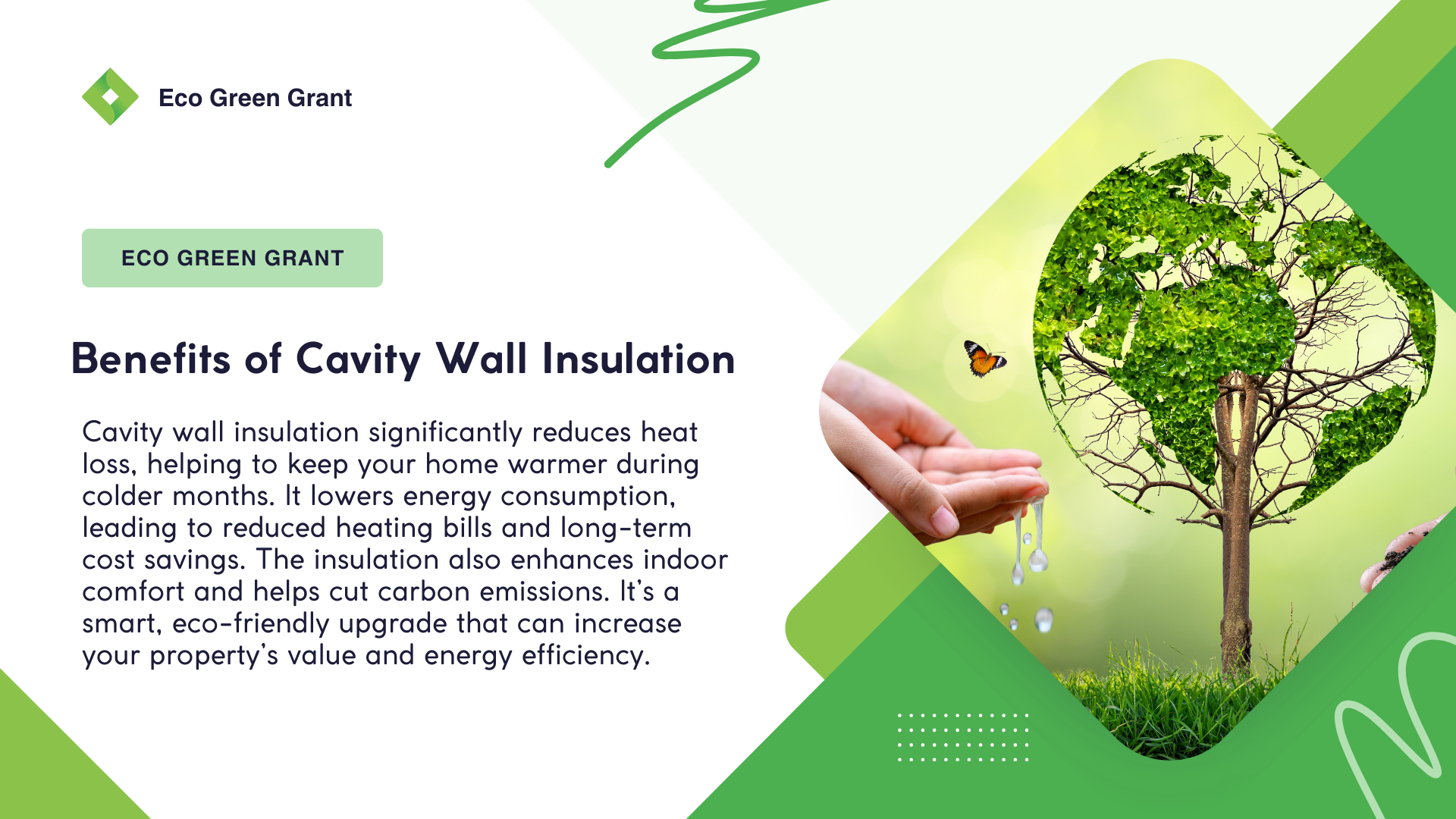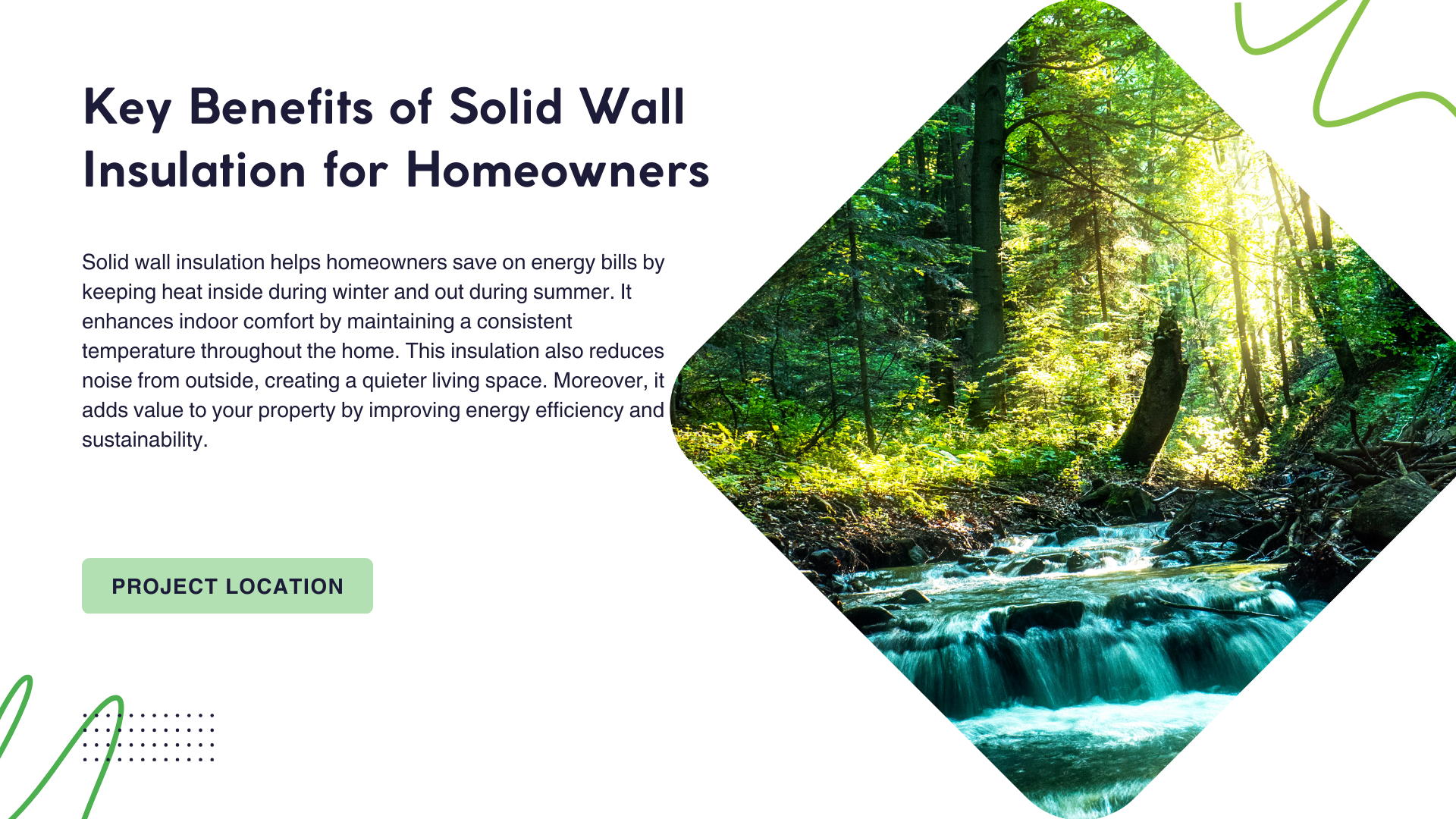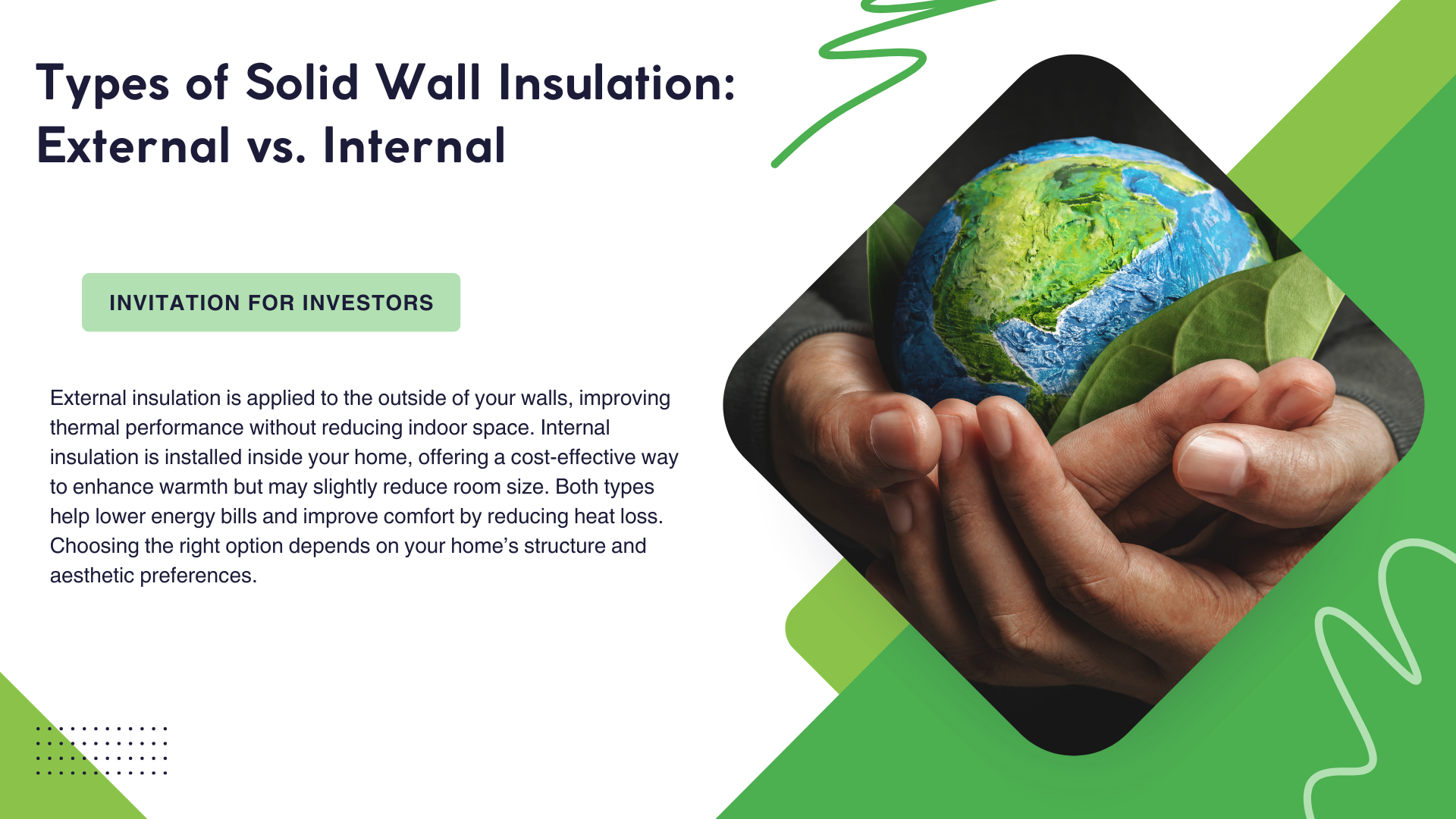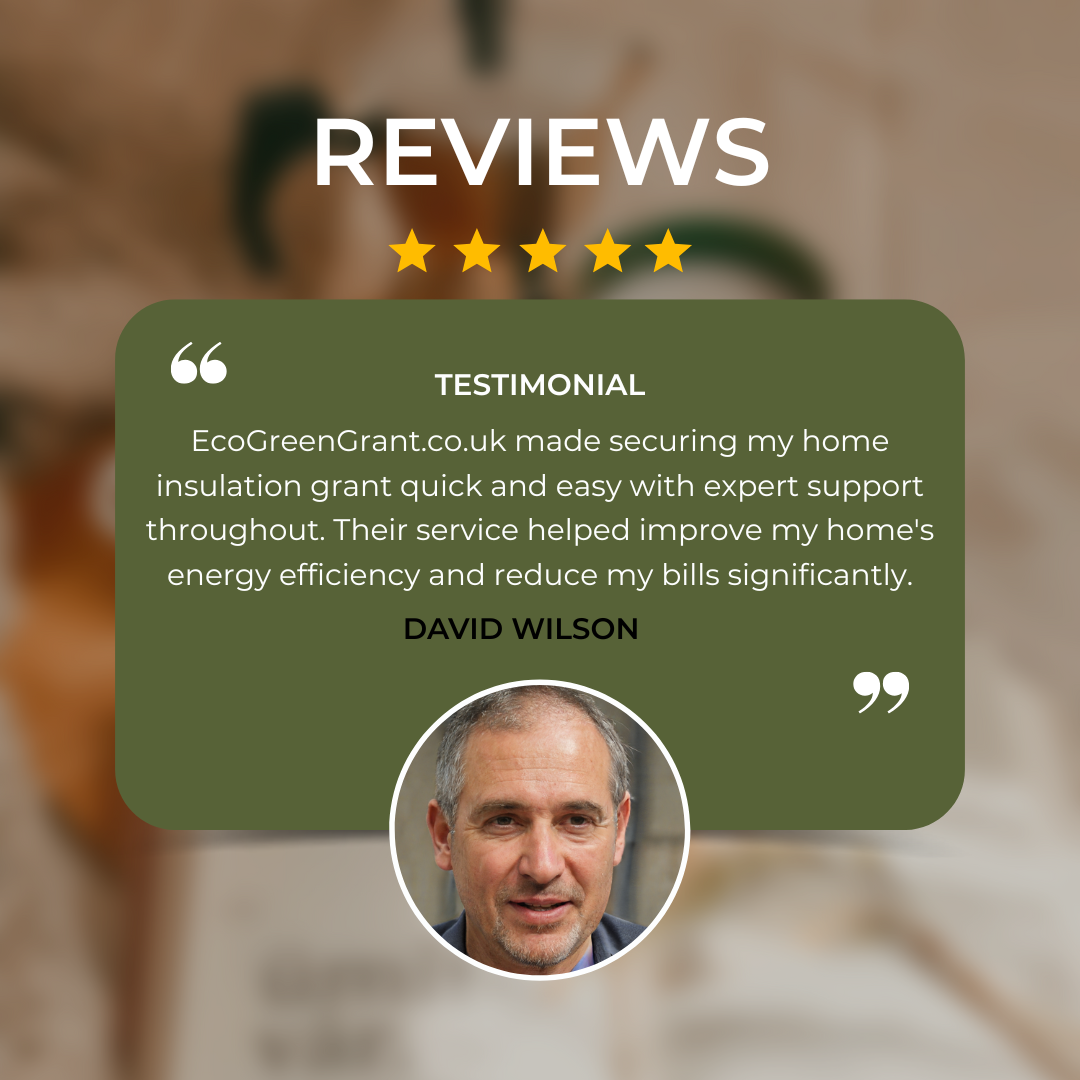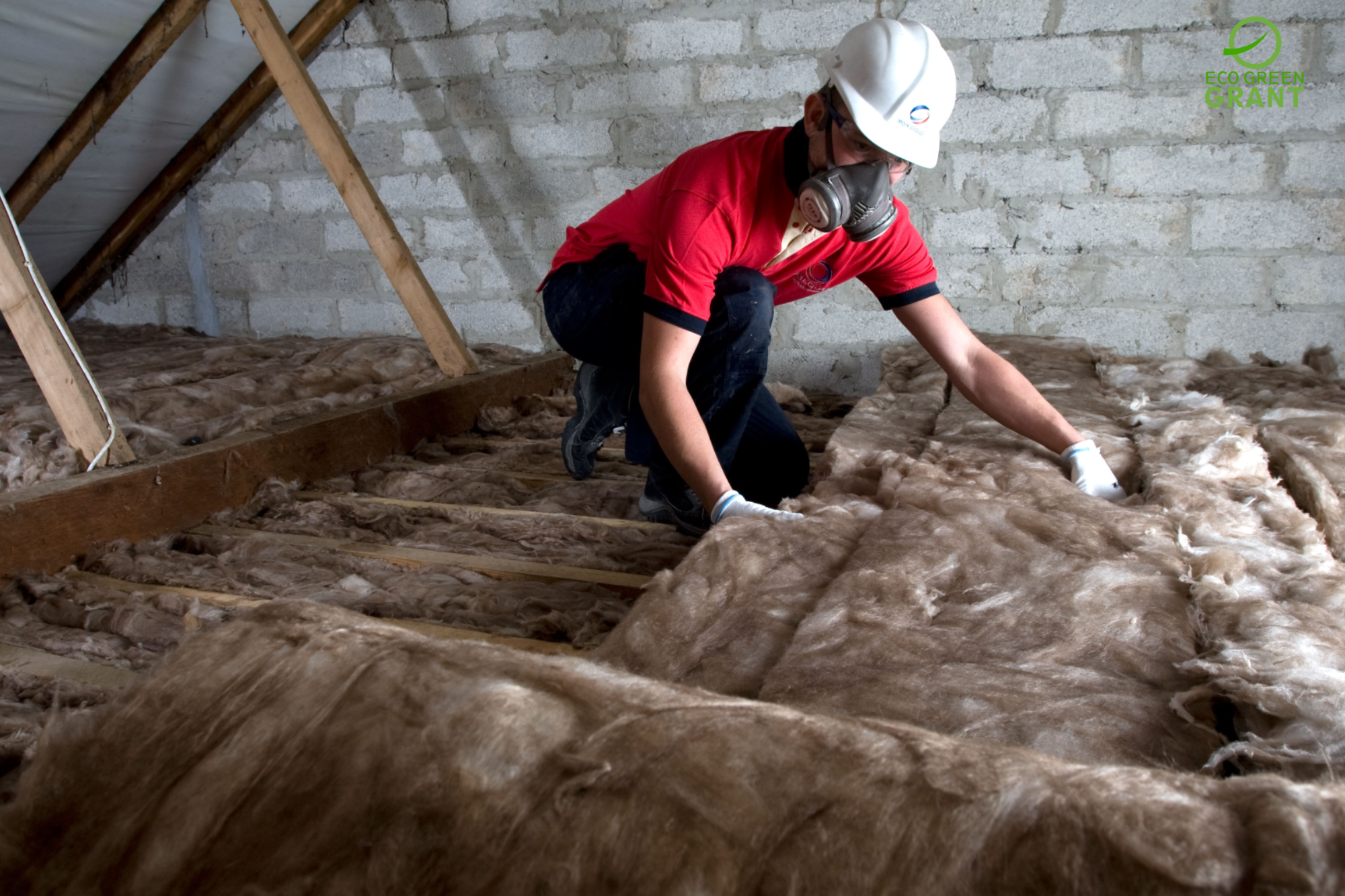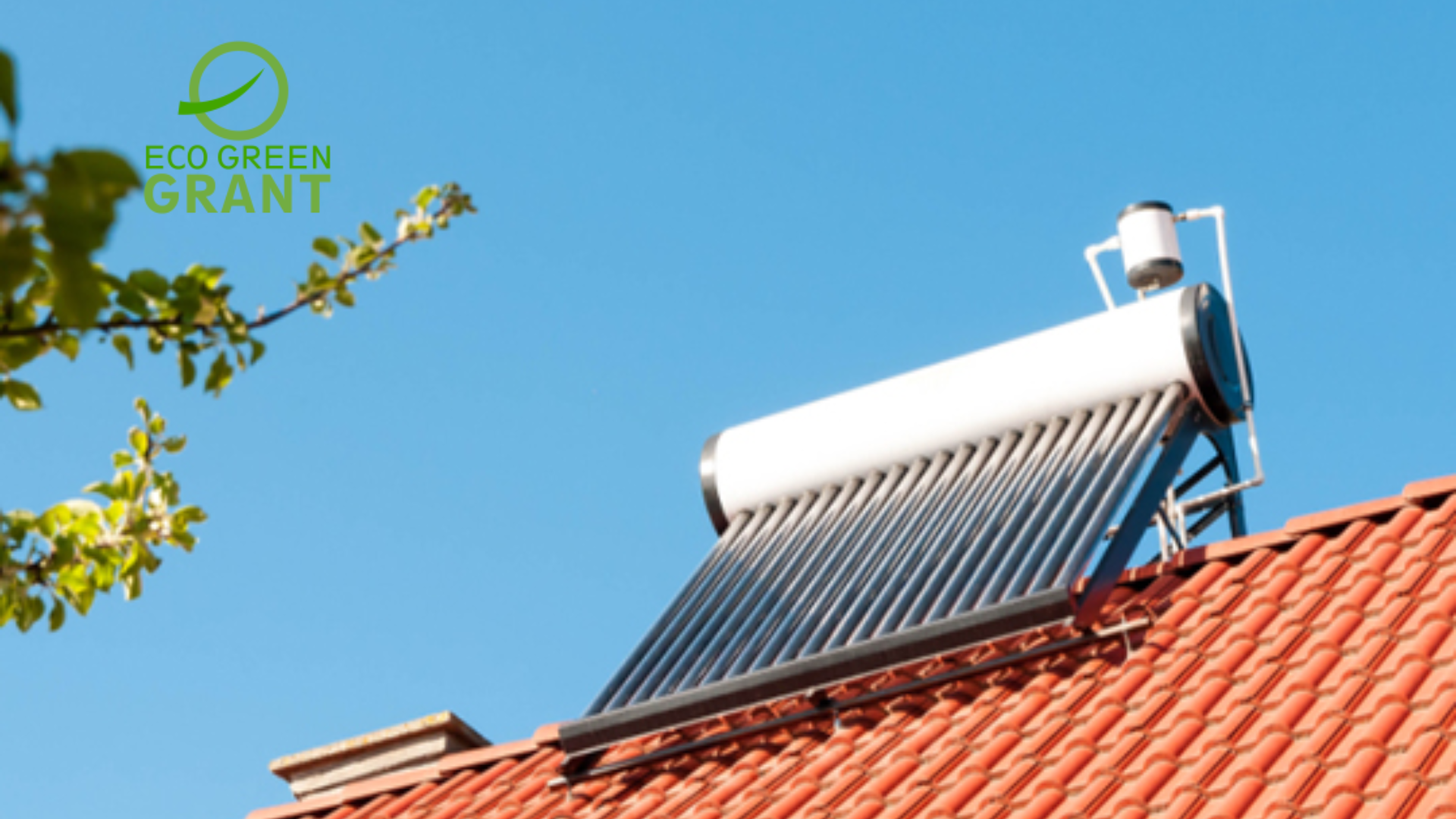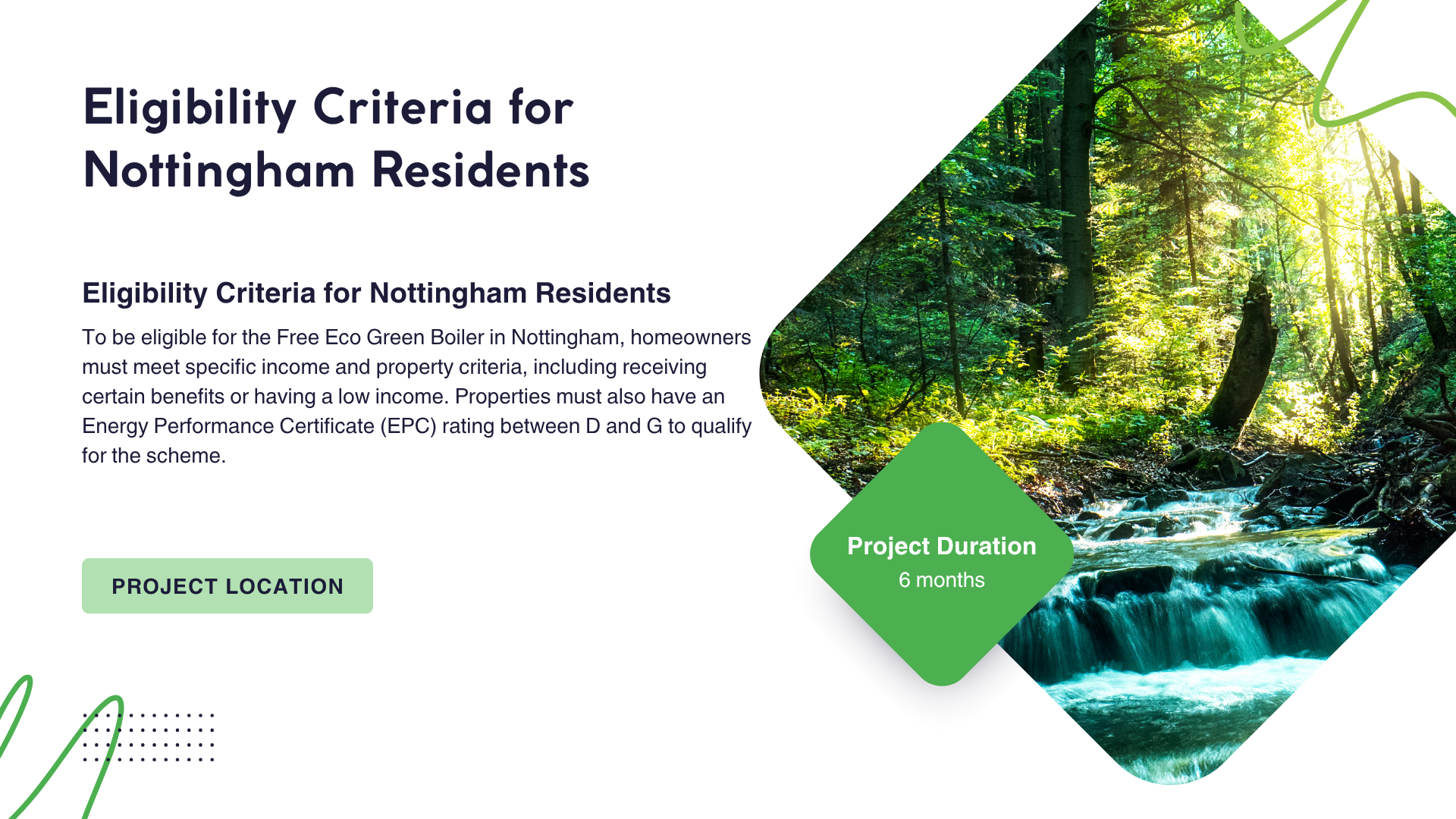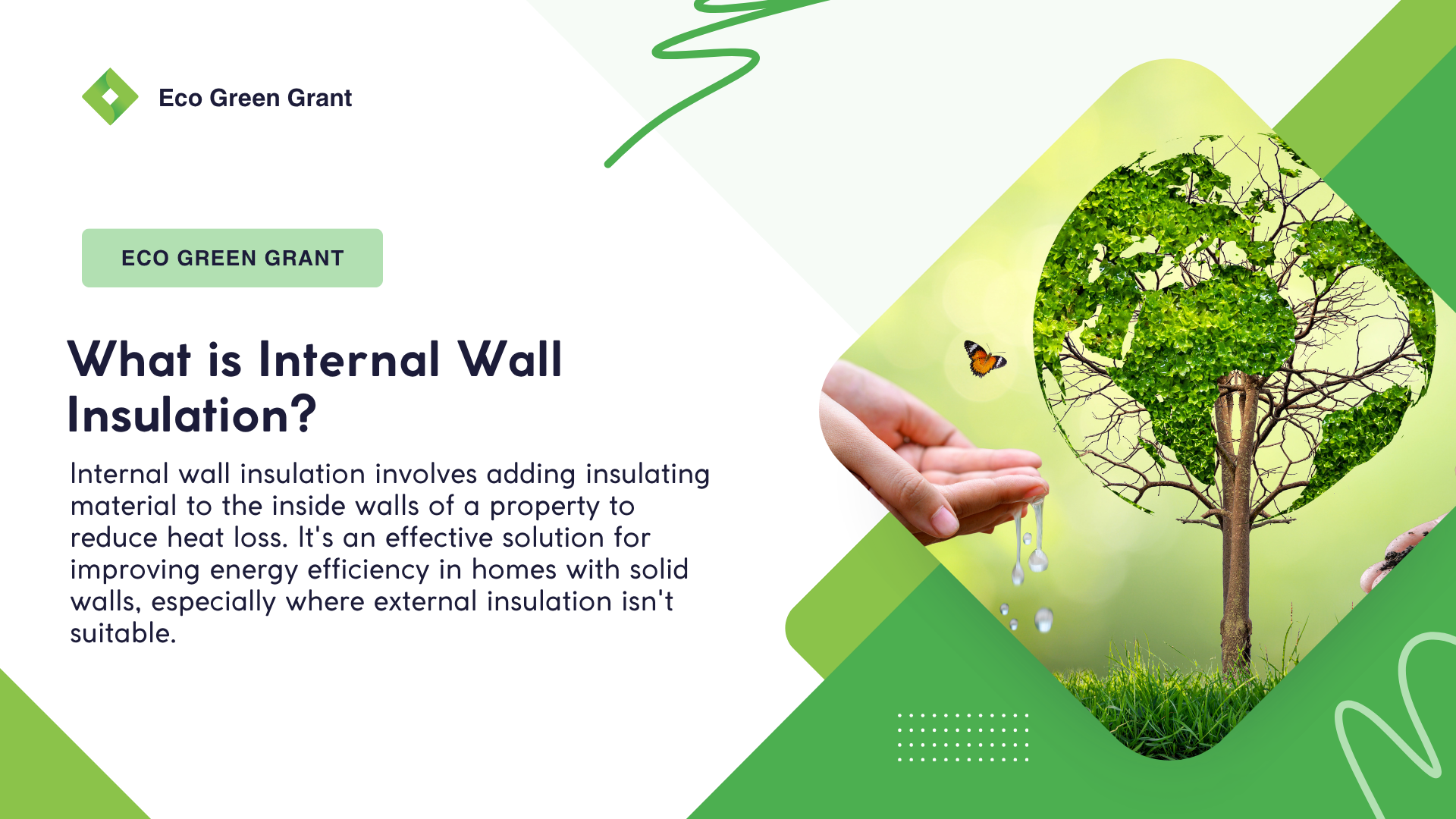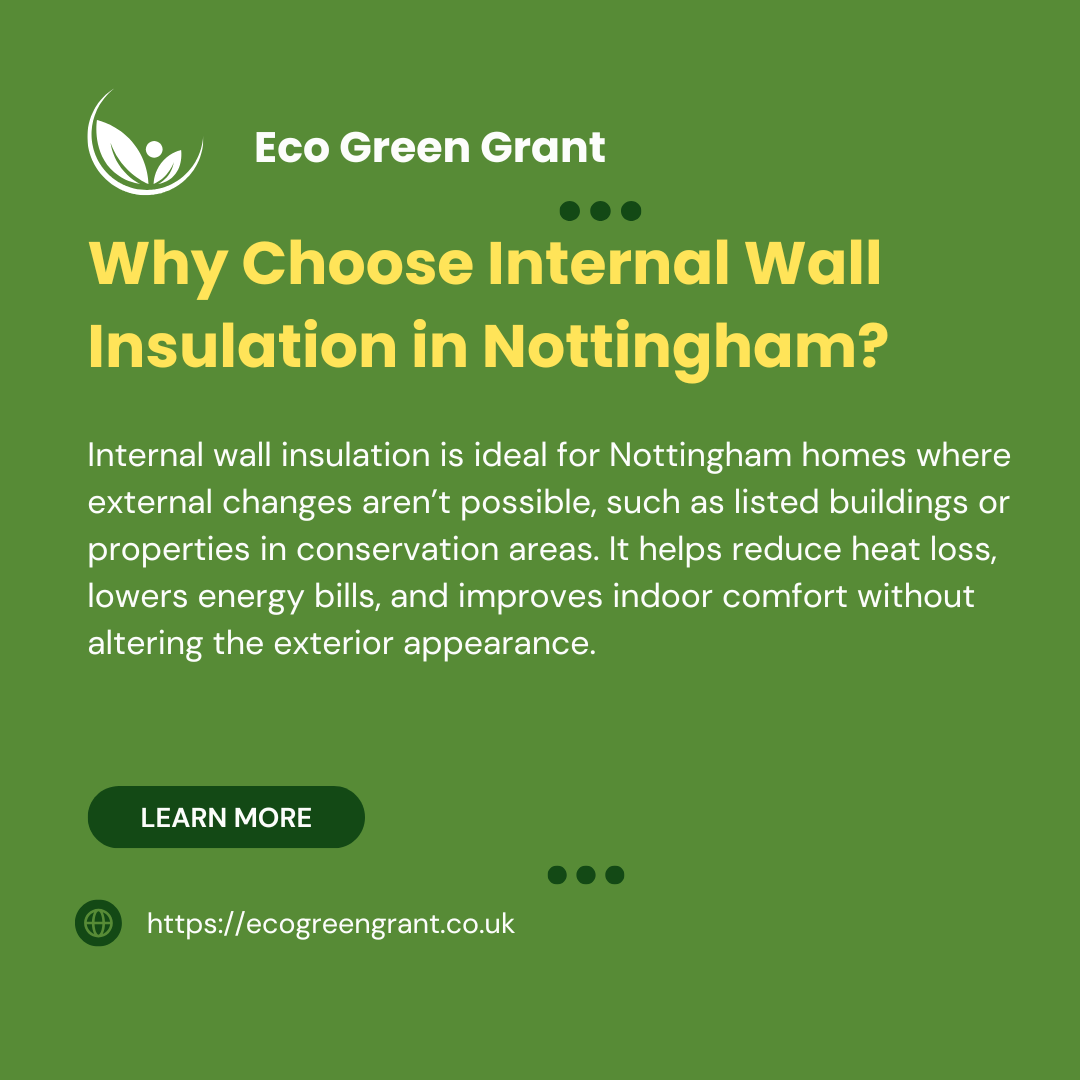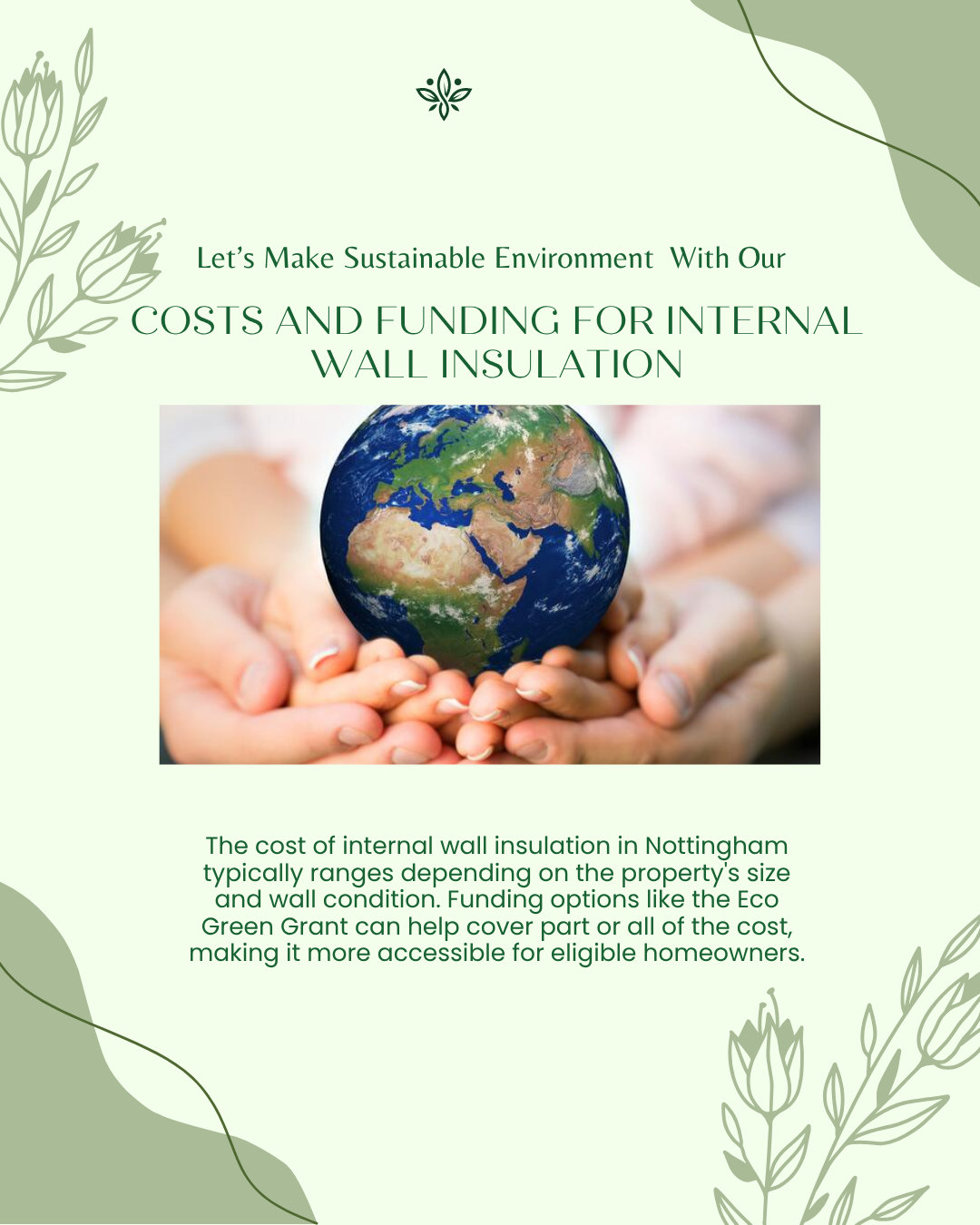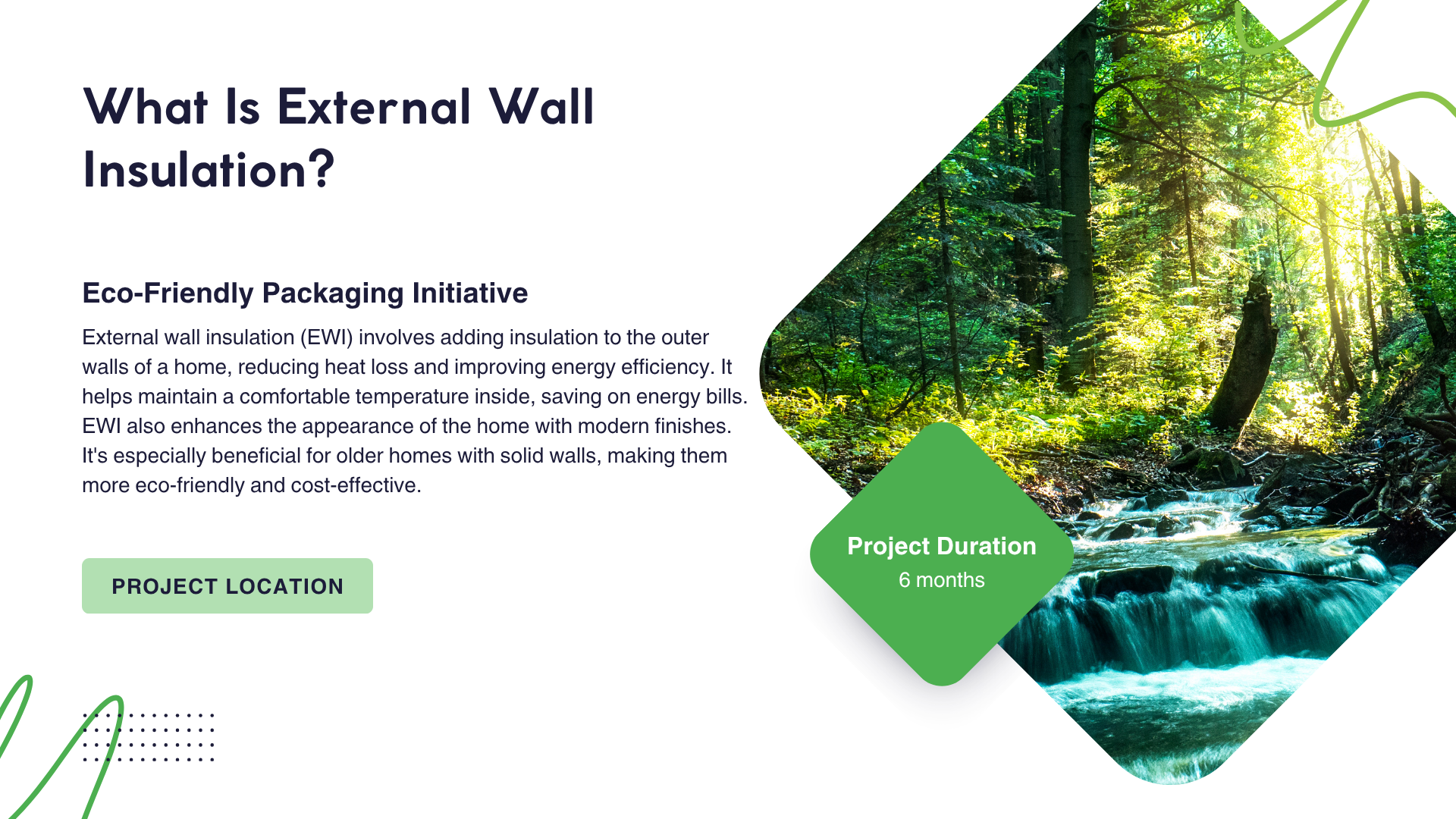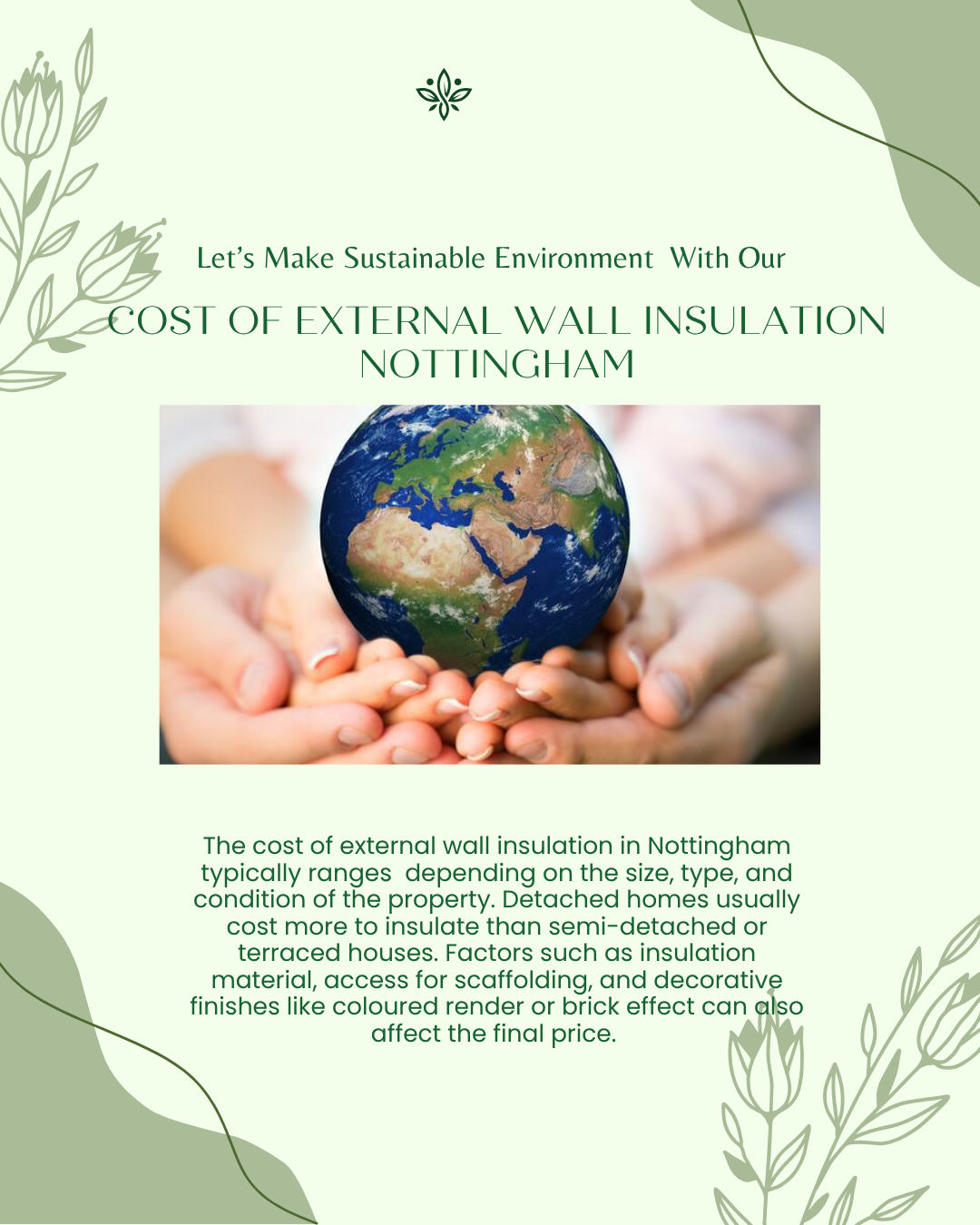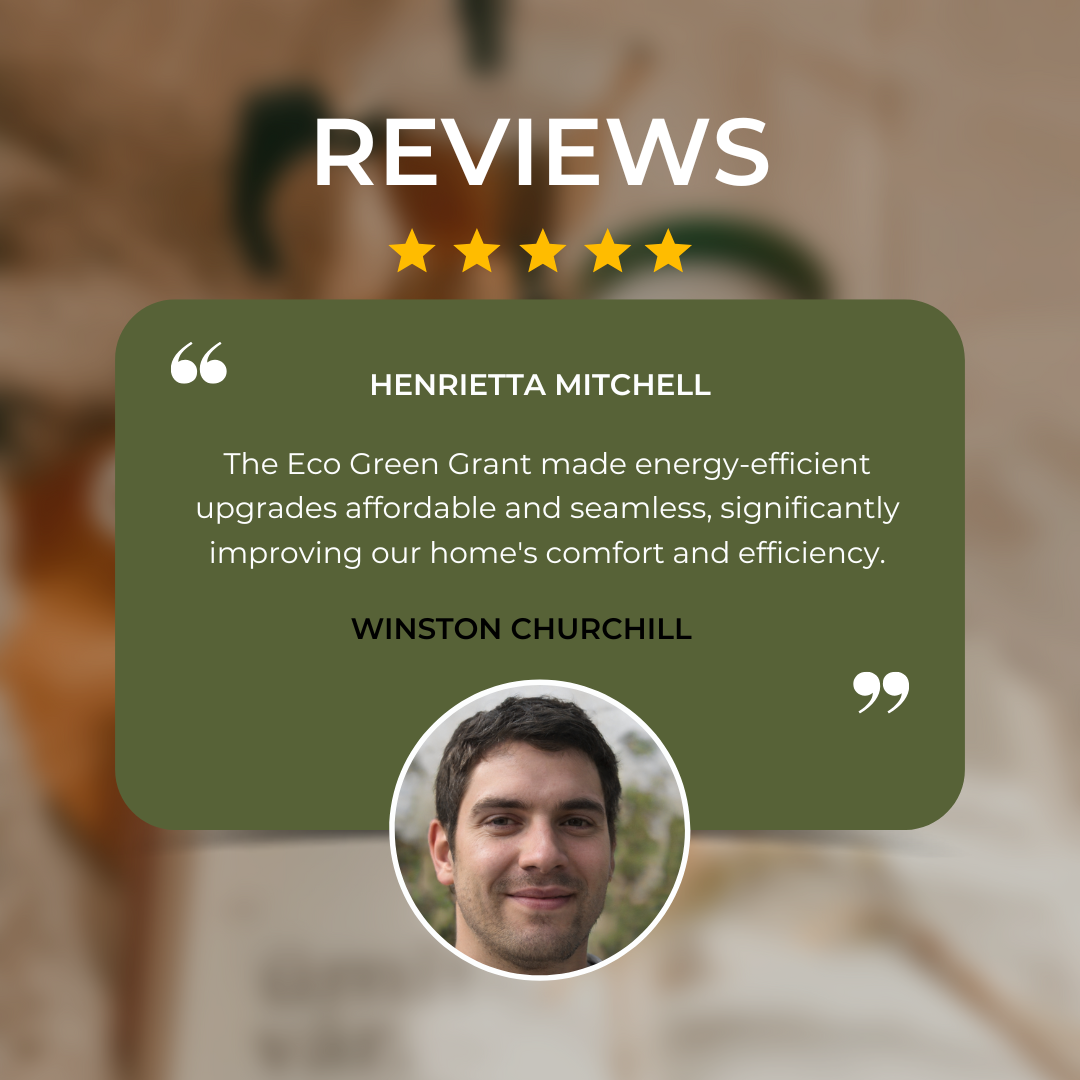The importance of home insulation cannot be overstated—it’s a simple upgrade with powerful results. From slashing your energy bills to keeping your home cozy year-round, insulation offers multiple benefits. In places with varying climates, like Lahore, good insulation makes all the difference. With support from programs like the Eco Green Grant, making your home energy-efficient is now more accessible than ever.
What Is Home Insulation and Why It Matters
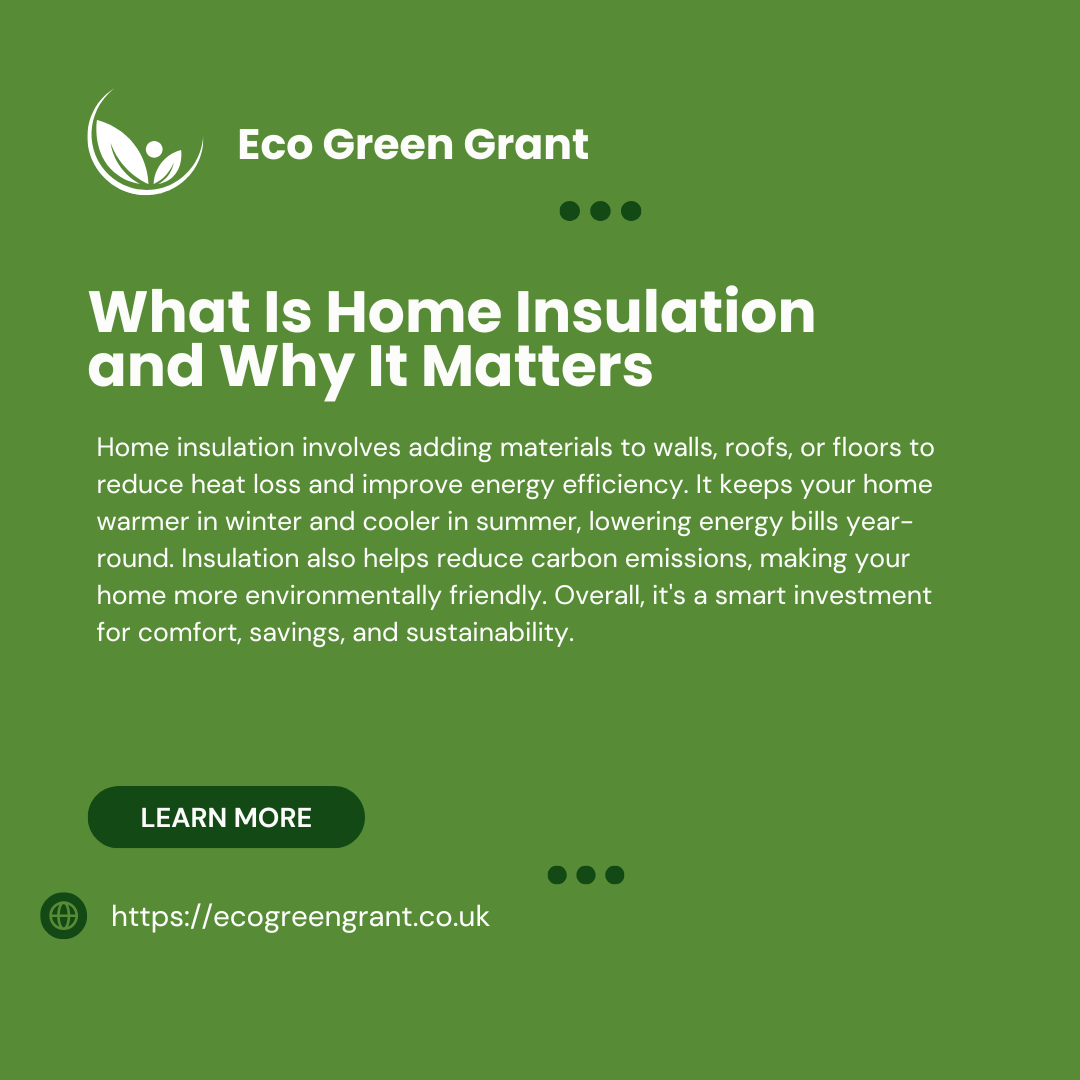
Insulation is a protective barrier that helps maintain indoor temperature by reducing heat flow. It’s installed in attics, walls, floors, and around doors and windows. The importance of home insulation lies in its ability to enhance comfort and lower energy use. Done right, it benefits both your wallet and the environment.
Understanding Home Insulation
Home insulation refers to the materials and techniques used to limit heat transfer between the inside and outside of a home. It keeps warm air in during winter and hot air out during summer. This helps your home stay comfortable without overworking your HVAC system. That’s why insulation is a must-have for modern energy-efficient homes. For more details on improving your home’s energy efficiency, check out Nottingham Energy Efficiency Grants.
How Insulation Works
Insulation works by trapping air in small pockets within materials like fiberglass or foam, which slows down the movement of heat. This reduces the need for excessive heating and cooling, saving energy and money. Imagine your home wrapped in a blanket—warm in winter and cool in summer. That’s the magic of insulation at work.
Importance of Proper Installation
Installing insulation isn’t just about stuffing material into walls—it needs to be done carefully and correctly. Poor installation can leave gaps, leading to energy leaks and higher bills. A professional installer will ensure everything is sealed tightly. If you’re applying for help from programs like Eco Green Grant, professional installation is often required for eligibility.
Energy Efficiency and Cost Savings
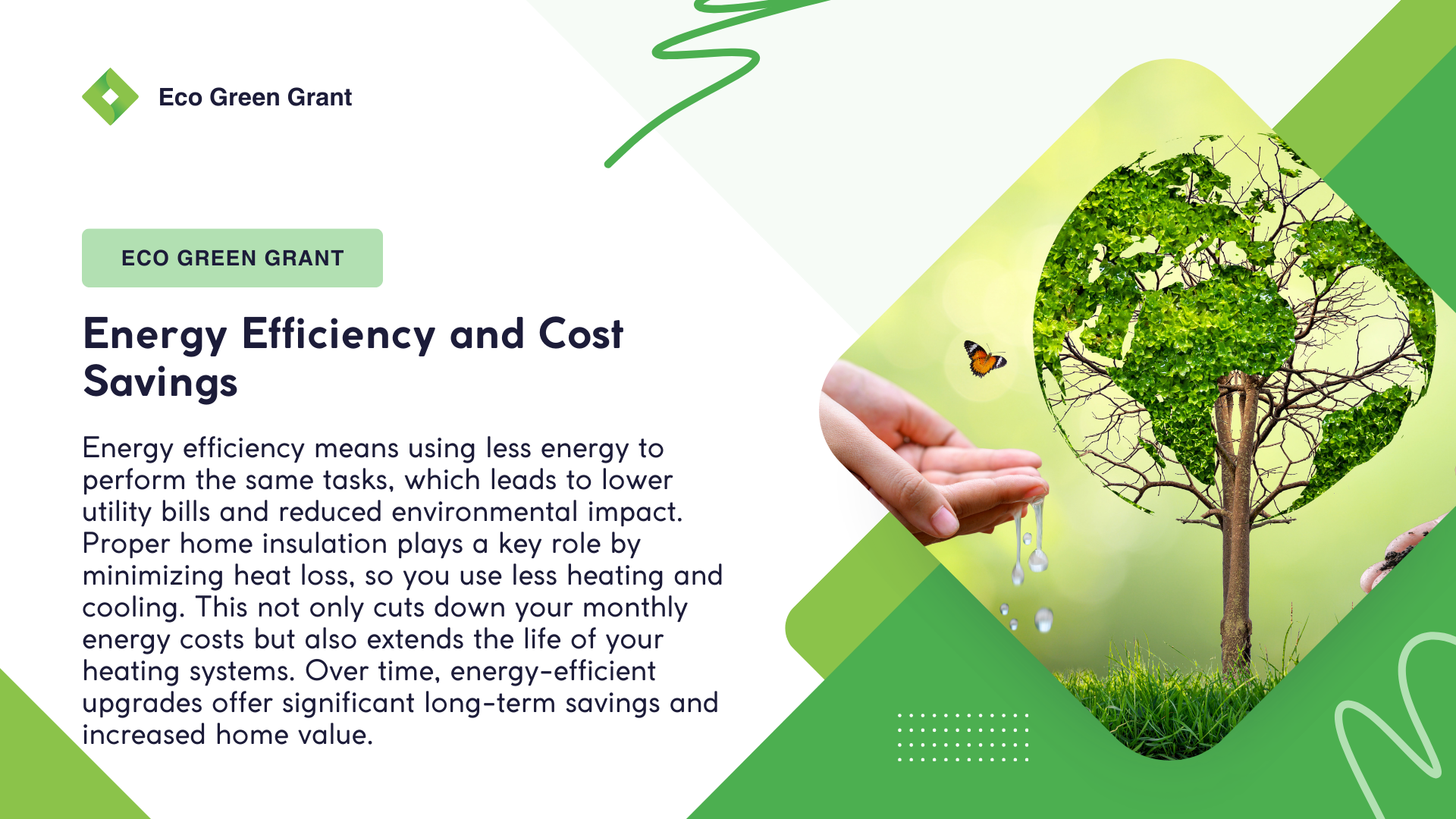
The importance of home insulation is most obvious when you see a drop in your energy bills. By keeping warm or cool air where it belongs, insulation reduces your HVAC system’s workload. This translates into lower utility costs every month. Long-term, it pays for itself—and then some.
Lower Energy Bills
One of the biggest perks of insulation is noticeable savings on your energy bills. When your home holds in heat during winter and stays cool in summer, your heating and cooling systems run less often. This efficiency translates to lower monthly costs. Many households report up to 30% savings annually with quality insulation. To learn about grants that can help fund these upgrades, visit Nottingham Home Upgrade Grant.
Return on Investment
Though insulating your home comes with upfront costs, it offers excellent return on investment (ROI). Within a few years, energy savings often surpass the initial cost. Plus, programs like the Eco Green Grant can offset these expenses. It’s one of those upgrades that adds value, comfort, and savings in equal measure.
Financial Assistance Programs
In places where weather extremes are common, governments often step in with support. The Eco Green Grant, for example, provides funding for insulation projects. This makes the upgrade affordable even for families on a tight budget. It’s a great way to invest in your home without breaking the bank.
Comfort All Year Round
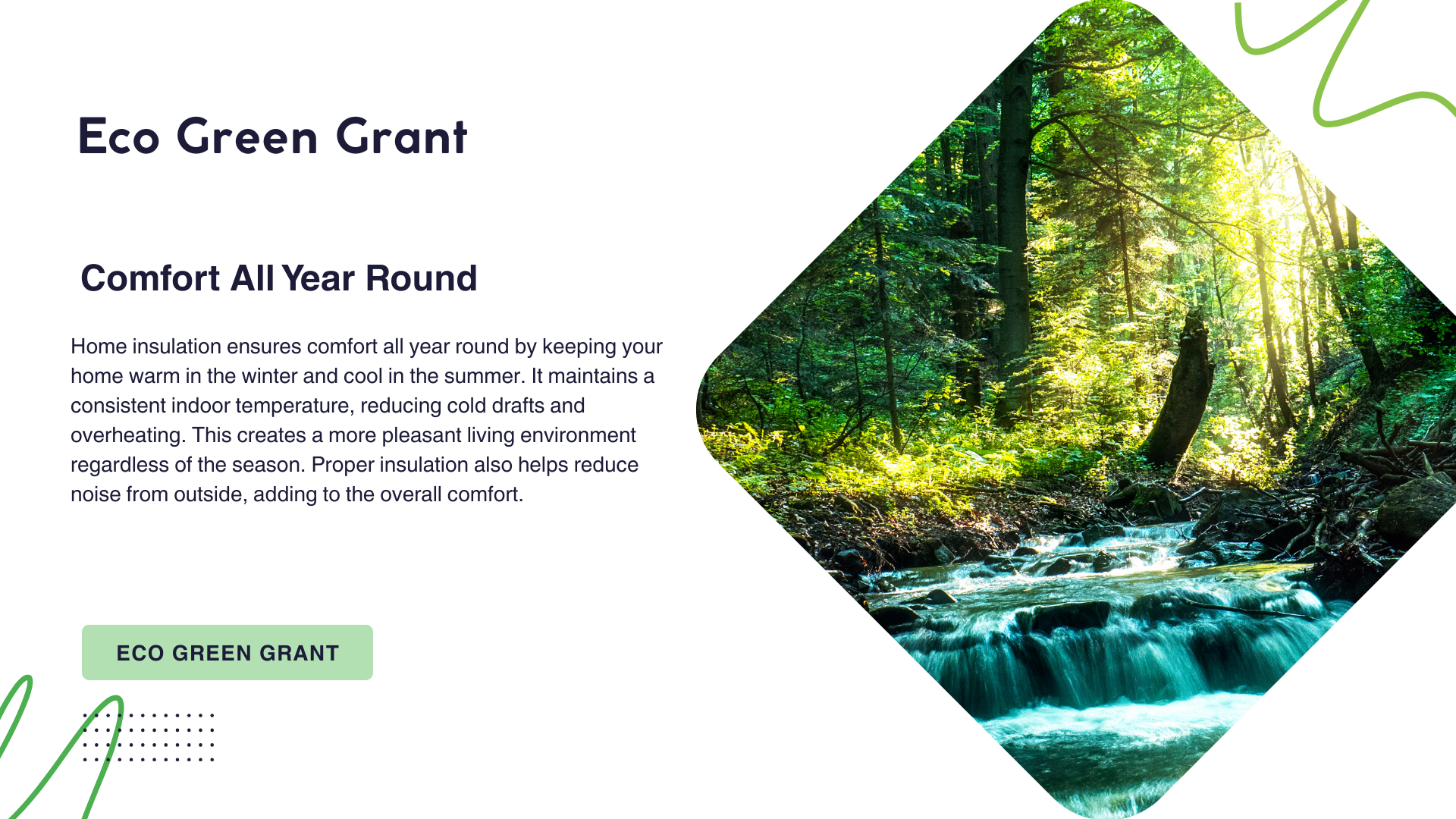
Insulation improves your home’s overall comfort by creating a stable indoor temperature. Without it, rooms feel cold in winter or sweltering in summer. The importance of home insulation becomes clear when you can relax in any season without constantly adjusting the thermostat.
Consistent Indoor Temperatures
Have you noticed how some rooms in your home are hotter or colder than others? That’s often due to poor insulation. A well-insulated home keeps temperatures consistent across all rooms. This eliminates cold spots and overheating, ensuring that every part of your house feels just right, no matter the season. To improve your home’s comfort, explore Energy-Saving Technologies in Nottingham.
Reduction in Drafts
Drafts are caused by air sneaking in through gaps around windows, doors, and walls. Insulation seals these spaces, helping to block out the unwanted airflow. It’s amazing how much cozier a room feels without that chill at your feet or behind your neck. Even small insulation improvements can eliminate annoying drafts.
Noise Reduction
Insulation doesn’t just control temperature—it also muffles sound. Whether it’s noisy traffic, barking dogs, or a neighbor’s late-night music, insulation can help you tune it all out. By adding insulation to walls and ceilings, you can enjoy peace and quiet. It’s like giving your home a volume dial—one that turns noise way down.
The Environmental Benefits of Home Insulation
Reducing your home’s carbon footprint is another huge reason to insulate. Less energy use means fewer emissions from power plants. This makes insulation an eco-friendly choice. And with support from initiatives like the Eco Green Upgrades, homeowners can contribute to a greener planet.
Reduced Carbon Footprint
The more energy your home uses, the more carbon emissions are released into the environment. Insulation cuts down on that usage by making heating and cooling more efficient. A properly insulated home could reduce your carbon emissions by nearly a ton annually. It’s a simple way to do your part for the planet.
Conservation of Resources
When your home uses less energy, it reduces demand on power plants and conserves natural resources like coal and gas. These are often non-renewable, and once they’re gone, they’re gone. By improving the efficiency of your home, you’re helping to conserve these valuable resources for future generations.
Support for Green Initiatives
Eco-friendly programs like the Eco Green Grant don’t just support individuals—they encourage a cultural shift. Insulating your home puts you on the map as someone who cares about sustainable living. It’s a small step with a big impact, especially when many homes in your area follow your lead.
Health and Safety Advantages
Good insulation contributes to a healthier home environment. It can prevent mold growth, improve air quality, and even enhance fire safety. The importance of home insulation isn’t just comfort—it’s about keeping your family safe and healthy.
Prevention of Dampness and Mould
Poor insulation can lead to cold surfaces inside your home, which cause condensation. This moisture can turn into mold, posing health risks. Insulation keeps your walls warmer, preventing condensation and dampness. That means a drier, healthier home with less chance of allergy or asthma flare-ups caused by mold.
Improved Indoor Air Quality
Sealing your home with insulation doesn’t just save energy—it also keeps out dust, pollen, and pollutants. This is especially important if you live near a busy road or suffer from allergies. When combined with good ventilation, insulation creates a fresh, clean air environment that’s safe to breathe every day.
Enhanced Structural Integrity
Moisture buildup can damage your home’s structure over time, leading to rot, corrosion, and expensive repairs. Proper insulation helps control moisture, protecting walls, ceilings, and floors. By maintaining a stable internal environment, insulation extends the life of your building materials and keeps your home structurally sound.
Boosting Property Value and Market Appeal
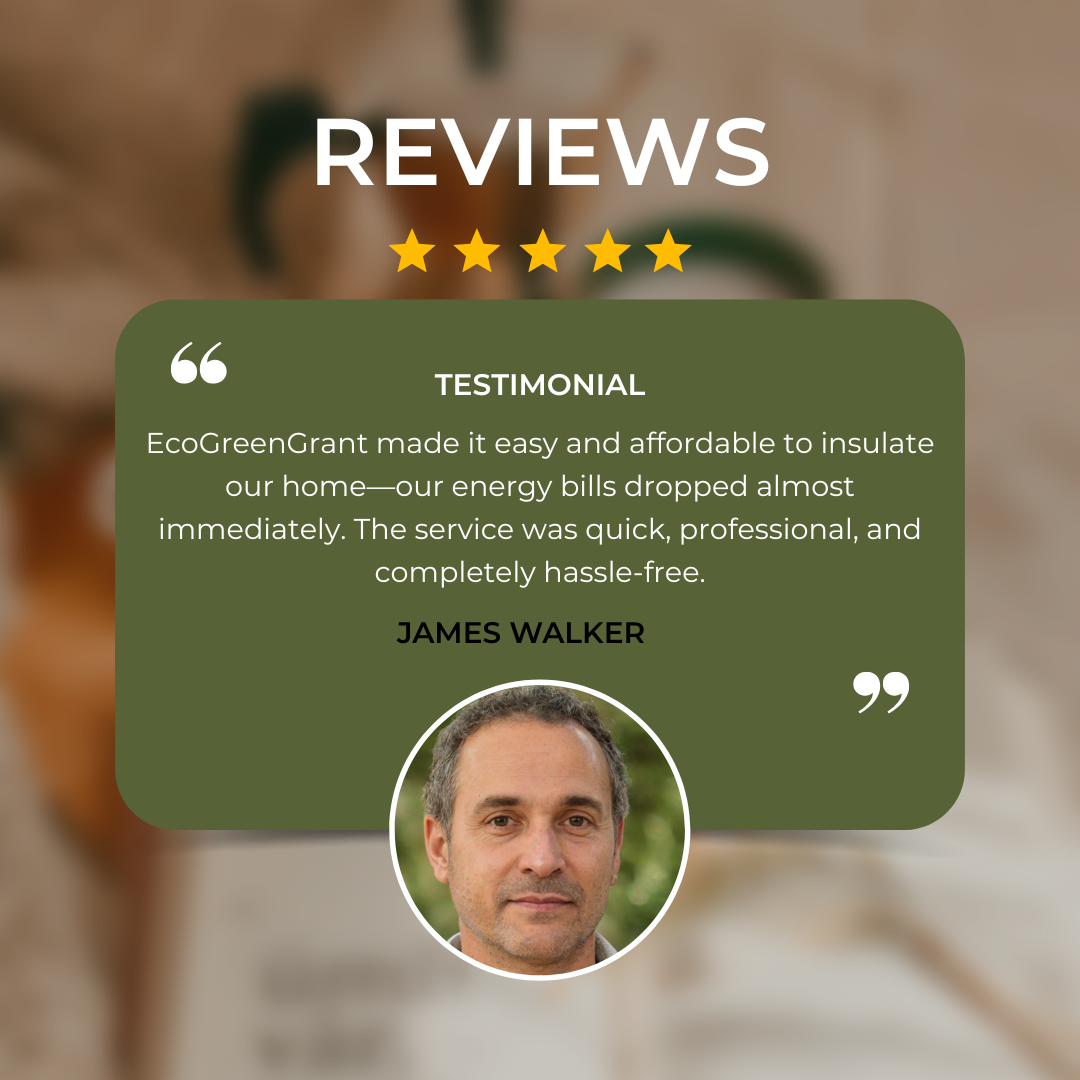
Thinking of selling your home in the future? One of the easiest ways to increase its value is by improving insulation. The importance of home insulation shows in the resale market—buyers love energy-efficient, well-maintained homes.
Appeal to Potential Buyers
A well-insulated home is a huge plus for today’s eco-conscious and budget-aware buyers. They know they’ll enjoy lower utility bills and improved comfort. Highlighting features like attic insulation or new wall panels in listings can attract more interest. It shows your home is energy-smart and well cared for.
Higher Resale Value
Real estate agents often point out insulation upgrades during home showings. These features can boost your property’s value by several thousand dollars. It’s a hidden gem that offers real benefits. Combined with updated windows and efficient HVAC systems, insulation becomes a major selling point.
Long-Term Investment
Even if you’re not planning to sell anytime soon, insulation is a solid long-term investment. Your energy savings grow each year, and your home remains comfortable and efficient. Plus, with help from Eco Green Grant, you may pay far less upfront. It’s a win for your finances now and in the future.
Types of Insulation and Where to Use Them

Different areas of your home need different insulation materials. The importance of home insulation is not just about whether you insulate—but how and where. Choosing the right type ensures you get the most value and comfort from your upgrade.
Fiberglass Insulation
This is one of the most common and affordable types of insulation. Made from tiny glass fibers, fiberglass comes in batts, rolls, or loose-fill forms. It’s ideal for attics, walls, and floors. Easy to install and non-flammable, it’s a popular choice for many homes—especially when budget matters.
Foam Board Insulation
Rigid foam board panels offer high insulating power in a thin form. These boards are often used in basements, foundations, and exterior walls. They’re moisture-resistant and long-lasting. If you’re renovating or building new, foam boards can provide excellent thermal resistance and act as a moisture barrier too.
Cellulose Insulation
Cellulose is a green option made mostly from recycled newspaper, treated to resist fire and pests. It’s great for filling wall cavities and attics. Installers often blow it into spaces, making it ideal for retrofits. It’s an excellent choice for eco-conscious homeowners looking for both performance and sustainability.
Spray Foam Insulation
Spray foam expands to fill every nook and cranny, sealing gaps and insulating at the same time. It’s perfect for hard-to-reach areas, like crawl spaces or rim joists. Though pricier, it offers top-notch performance in thermal insulation and air sealing. Professionals typically apply it for best results.
FAQs
What is the main importance of home insulation?
The main importance of home insulation lies in its ability to keep your home comfortable while saving money on energy bills. It acts as a barrier to heat loss in winter and keeps the heat out during summer. This means your heating and cooling systems don’t have to work as hard, lowering your monthly utility costs and improving energy efficiency.
How does insulation help reduce energy bills?
Insulation reduces the amount of heating or cooling needed by keeping indoor temperatures stable. That means your air conditioner or heater doesn’t run constantly, cutting down on electricity or gas usage. For many homeowners, this results in noticeable savings—up to 30% annually—on their energy bills.
Can home insulation really improve comfort?
Yes, insulation significantly boosts indoor comfort by eliminating drafts, balancing room temperatures, and reducing hot or cold spots in your home. It keeps your space warmer in the winter and cooler in the summer. Plus, it helps with noise reduction, making your home feel more peaceful overall.
What areas of the home should be insulated?
Key areas include the attic, walls, floors, basement, crawl spaces, and around windows and doors. Each of these areas plays a role in heat transfer, and insulating them properly ensures energy efficiency throughout your entire home. Addressing these spots provides full thermal coverage and improved indoor air quality.
Are there different types of insulation materials?
Yes, there are several types, including fiberglass, foam board, cellulose, and spray foam. Each type suits different parts of the home based on performance, moisture resistance, and cost. For example, fiberglass is great for attics, while spray foam works well in tight or irregular spaces like corners and crawl areas.
What is the Eco Green Grant and how can it help?
The Eco Green Grant is a financial assistance program that helps homeowners afford energy-efficiency upgrades like insulation. It may cover part or all of the installation cost depending on eligibility. It’s designed to make eco-friendly living more affordable and accessible, especially for households on a budget.
Is insulation a good investment if I plan to sell my home?
Absolutely. Proper insulation increases property value and appeals to energy-conscious buyers. A well-insulated home means lower future energy bills, which is a big selling point. Highlighting your insulation upgrades can give your listing a competitive edge in today’s real estate market.
Can insulation help reduce noise inside the home?
Yes, many insulation materials also act as sound barriers. Insulated walls, ceilings, and floors can dampen noise from outside and reduce sound transfer between rooms. This is especially useful in noisy neighborhoods or for homes with thin walls.
Will insulation help prevent mold or damp issues?
Definitely. Insulation keeps surfaces warm, which reduces condensation and the risk of mold growth. This is important in humid areas or older homes where dampness can lead to structural damage and health issues. Insulation, when combined with proper ventilation, creates a drier, healthier environment.
How do I know if my home needs better insulation?
Signs include uneven temperatures between rooms, high energy bills, cold drafts, and difficulty maintaining a comfortable temperature. If your home was built before modern insulation standards, it’s likely under-insulated. You can get an energy audit or consult a professional to check insulation levels and recommend improvements.


